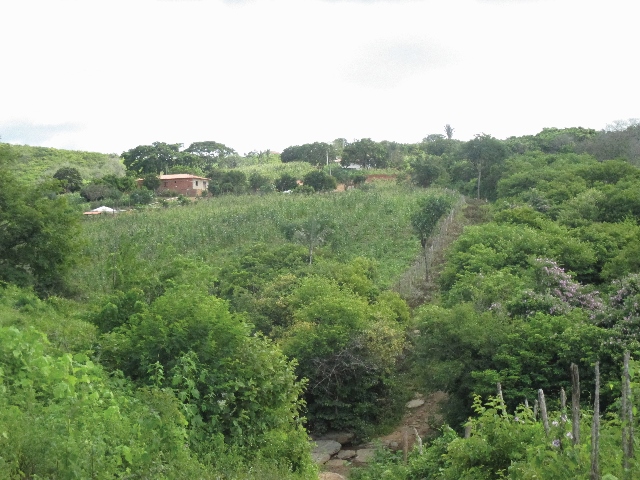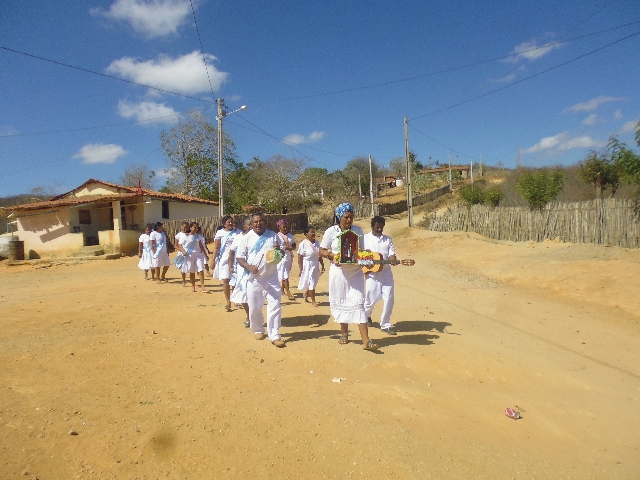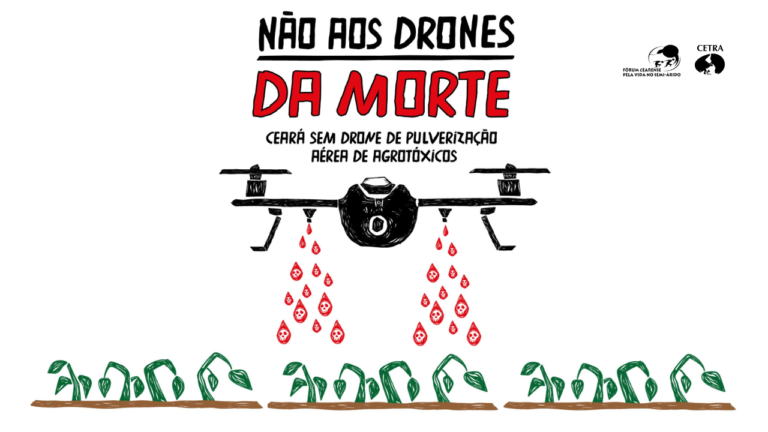Every day is a day to resist – The experience of Quilombo Sítio Veiga
Every day is a day to resist! Fight, tradition and challenges of the quilombola people in Sítio Veiga
A place of struggle, resistance and traditions, that is the ‘Quilombo Sítio Veiga’. A ‘quilombo’ is how they call in Brazil the communities formed by the descendants of former African slaves, that flew from their captives and formed independent settlements far off in the land. The Quilombo Sitio Veiga is located 25 km from the city of Quixadá, in the middle of the Serra do Estevão Mountains, Ceará, Northeastern Brazil. The first family to arrive at this place migrated from Pau dos Ferros, Rio Grande do Norte State, fleeing from the persecution they suffered there. The couple Maria Ribeiro and Chiquinho Ribeiro, the latter known as Pai Xingano, arrived around 1906 to their new home in the mountainous region, settling at the time in a place called Sítio Sorocaba.
There are currently 39 families living in the community, and the land ownership is still precarious, few families own their own piece of land and many others work as tenants, transferring most of their production to the landowners. The land tenure regularization process, covering a total area of 967.5 hectares, is underway. The Community organize itself through the ‘Association of the Remnants of Quilombolas of Sítio Veiga’. In 2005 the community received the Dom Helder Câmara Project, assisted by CETRA, benefiting 28 families with the construction of social technologies, such as the ‘first water cistern’, and this initiative helped to strengthen the process of organization of the quilombola people of Sítio Veiga.


Since then the process of identification and research on the community’s origins and identity steadily continued. In 2009, at the 9th Ceará State Meeting of Rural Quilombola Communities, the group from Sítio Veiga were recognized by the Palmares Cultural Foundation as a true remnant Quilombola community. The lack of land ownership often limits the community to access projects such as dairy goat breeding, poultry farming, among others. “We just don’t have any projects anymore because they stop due to the land issue. If we would like to build a water dam, for example, it is not possible”, says Mr. Antônio Lopes with indignation.
The struggle for recognition of their identity and rights comes from far, but the community has already reaped many fruits, today all families have the ‘first water cisterns’, there are also 5 ‘boardwalk cisterns’ and 17 ‘flood cisterns’. They have also build the Honey Production Unit “Mother Luzia”, the “Xingano Father” Seed House and the community cistern, which are all social technologies that make possible the coexistence with the semiarid drylands. The community develops projects in beekeeping, breeding and genetic improvement of free-range chickens, agro-ecological yards, in addition to candy production and cutting and sewing projects.

The São Gonçalo Dance – celebration and tradition
The São Gonçalo dance is a religious manifestation, considered a community cultural heritage. The dance involves men, women and young people. It has been passed on from generation to generation and is nurtured with great pride. It is coordinated by the grandson of Father Xingano and Maria Ribeiro, Senhor Joaquim Roseno, 78 years old, and he assumes the role of master of dance. In 2010, he was recognized by the Ceará State Secretariat of Culture as a ‘Master of Culture’.
Every year the community celebrates the Black Awareness Week as a way of strengthening the quilombo’s cultural expressions. The empowerment of the quilombola women is another aspect that is quite important, the ‘Being a Black Woman’ project, is a way to affirm the African roots, that ares expressed in the use of turbans, of braids, and in the practice of capoeira (the martial art) and many forms of dance. Securing and demarcating land remains the biggest challenge to the quilombola families of Sítio Veiga, as it is still a debt held by the Brazilian state towards traditional communities.

The strong identity with the territory is expressed in the speech of one of its leaders, Meire, , when she says, “no, I won’t leave this Veiga to no other corner in the world”. Another member of the community, Ana Eugenia says,“if I leavie the quilombo my roots break and I die, to move elsewhere won’t do for me”.


